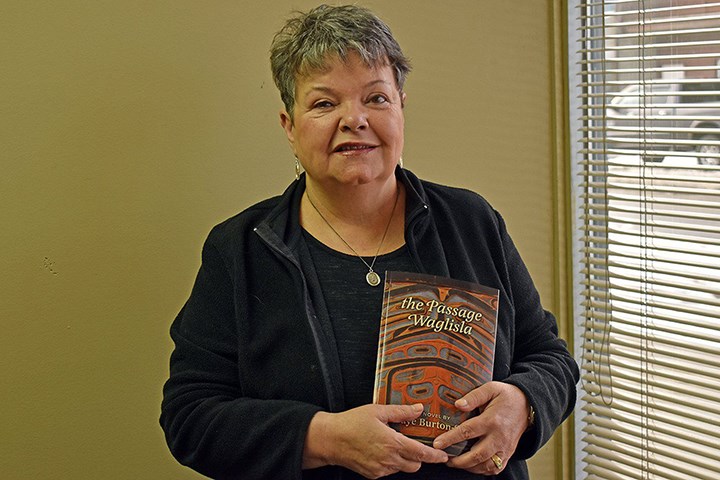A 35-year ago experience on B.C.’s central coast is the inspiration behind a retired Williams Lake teacher’s first novel.
Twelve years ago, Gaye Burton-Coe began writing her historical fictional novel the Passage Waglisla which is inspired by her summer of 1985 archaeological research in the traditional territories of the Heiltsuk Nation (Bella Bella).
“I would get so drawn into the story that I couldn’t focus on anything else,” she said of writing her recently self-published book.
The novel follows young archaeologist Laura Fitzgerald who arrives at the reserve Waglisla (Bella Bella or the Passage) to explore and document the remains of wooden surface artifacts such as free-standing memorial poles, carved house posts and wooden beam remains.
Most of the archaeological sites within the 268-page book are real. However, Burton-Coe did change some of the facts to fit the story’s narrative and kept their locations intentionally vague so they will not be disturbed.
While she did not meet the Heiltsuk Nation Chief or fall in love with a Heiltsuk man, as Fitgerald does, Burton-Coe said she can relate on many levels to that of her fictional protagonist.
”When I went there, I was very naive,” Burton-Coe said, noting she had received little cultural training at the time.
Like Fitzgerald, Burton-Coe embarked to the territory covering more than 35,000 square kilometeres to document the remains of wooden features.
Aside from her fieldwork, Burton-Coe said she, too, had spent a great deal of time learning about the sites and history of Waglisla, which was adversely impacted by colonialism and residential school from Heiltsuk elders.
The novel opens and ends with a dream sequence where Fitzgerald is visited by real-life anthropologist Franz Boas who had worked in the region between 1880s and 1920s.
“I want people to understand why today there’s still a carryover from the historical events of colonization —what we did to those people and how the healing process takes time,” said Burton-Coe, who, like her fictional character, believes the Heiltsuk will recover and flourish.
“I want people to see Indigenous people as real people who suffered an enormous tragedy,” she said.
Burton-Coe completed her research results in a master’s thesis at Simon Fraser University in 1987 before moving to Manitoba.
After undertaking further archaeological work, she taught at the University of Brandon while actively pursuing her Bachelor of Education and delving into further research of her own where she learned more about the impacts of colonialism and horrors of residential school.
Since 1992 she has resided in Williams Lake, where she and her husband are enjoying their retirement and excitedly awaiting the arrival of their first grandchild due in April.



